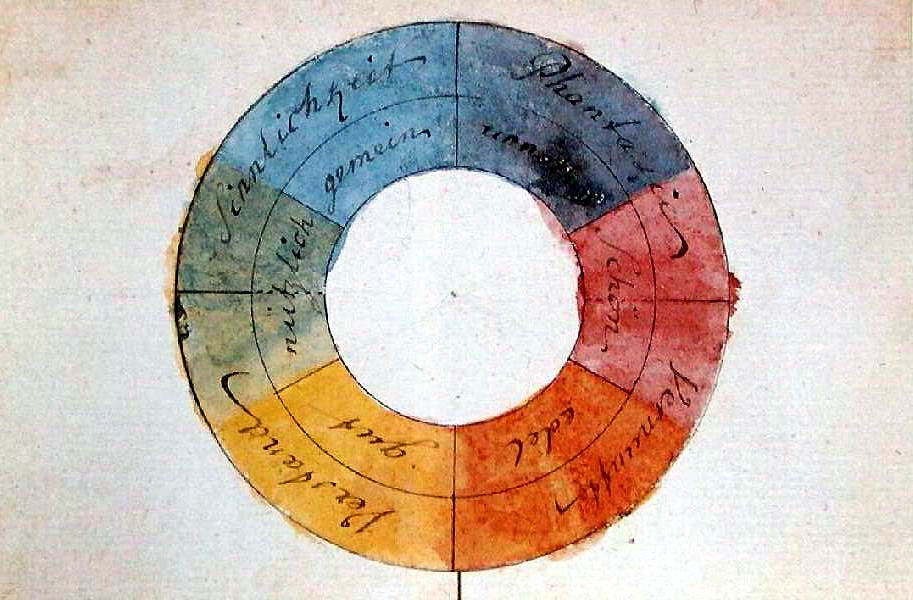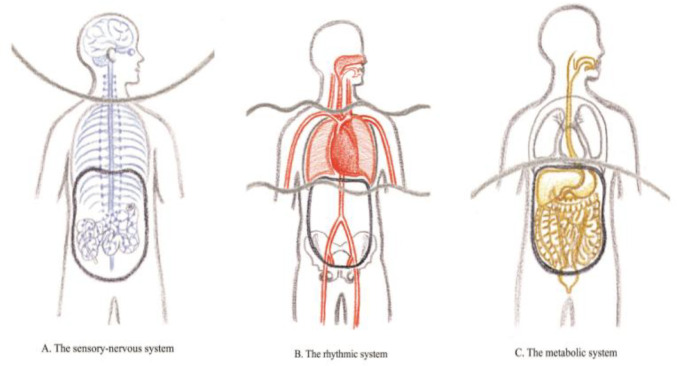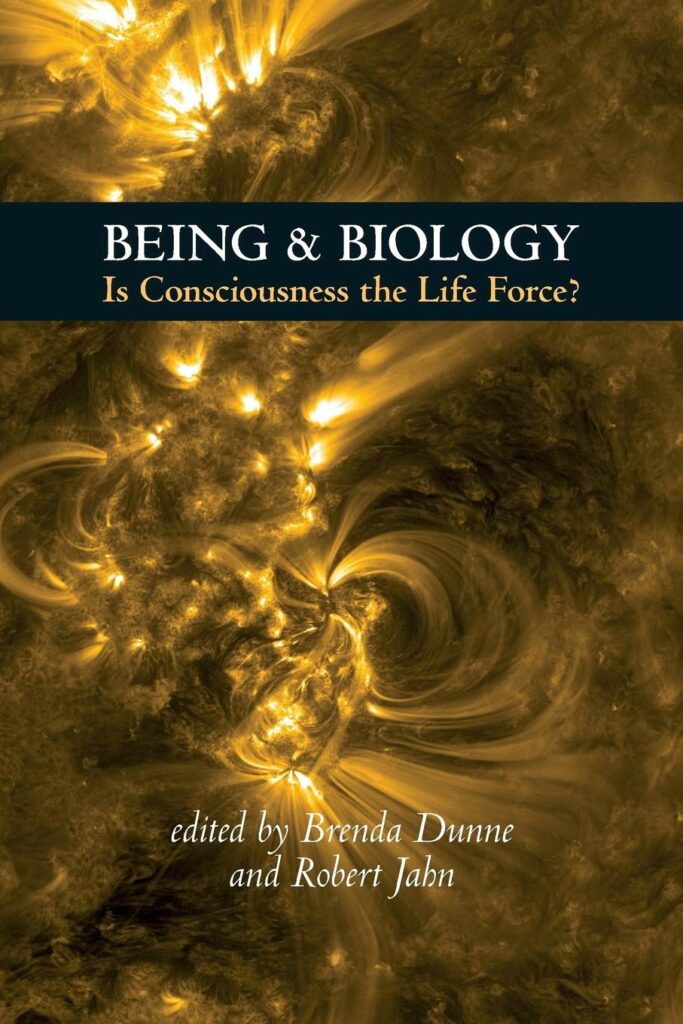
Complementing Reductionism: Goethean Science. Part 1
Part 1: Qualities and wholeness
By AliciaLandman-Reiner
Abstract
While integrative practices in health care have grown over the past half-century, life sciences still view nature almost entirely through a reductionist lens. Contemporary research is described that complements this reductionist, non-holistic perspective with the methods of Goethean science. A rigorous approach to qualitative science and to wholeness in nature is outlined.
Keywords
- Goethean science
- Qualitative
- Wholeness
- Anthroposophic medicine
Introduction
The physico-chemical mode of studying the animal or plant has, indeed, everything to recommend it, so long as its limitations are never forgotten.
– Agnes Arber1
Medicine’s scope has broadened over the past 50 years, challenging one-sided materialism and reductionism. Use of traditional medicinal herbs is substantial, growing, and global.2, 3, 4 Birth and death are increasingly acknowledged by modern medicine as transcendent events calling for care for body, soul and spirit.5,6 Meditation in the form of mindfulness practice is widely researched and included in medical training.7, 8, 9, 10, 11
Yet while health practices are evolving, the way in which scientists view the world remains almost entirely restricted to nature as molecular matter. This strongly shapes research and determines funding. The focus of research on medicinal plants, for example, is overwhelmingly on isolated compounds, their biochemistry and molecular genetics. While such findings are tremendously useful and important, we can only see through a viewfinder, the region at which we aim it. If we are to provide a solid scientific basis for a broadened integrative medicine and a balanced understanding of nature altogether, we must expand where and how we look.12
Most of us can little imagine what an expanded biological science might actually look like. The question hangs in the air: by what scientific, but not narrowly material, ways of thinking and researching might we better apprehend aspects of nature that are resistant to the overly reductionist strategies of orthodox science?
A significant body of work pioneering this task has emerged in recent decades from Goethean science. This article offers an overview of that work. First it examines how qualities can inform us about plants and animals in ways invisible to the quantitative eye. Second, it explores wholeness, a concept inaccessible to reductionism.
What is Goethean science?
Johann Wolfgang von Goethe (1749–1832) was, typically for the scientific seeker of his day, a gentleman with a home-based laboratory and time to study nature. Although he well understood the achievement of Isaac Newton (1642–1727),13, 14, 15 Goethe had a deep affinity for nature’s character and an approach that conflicted in style and method with the advances in science of his period, which he critiqued as one-sidedly analytic.16
Goethe’s scientific writing was understood by few, and then largely forgotten, while reductionist science and technology grew in extraordinary ways.17,18 But 90 years later, the significance of his scientific work was recognized and explained as an epistemologically valid and important methodology for understanding life, by the young scientist and philosopher Rudolf Steiner (1861–1925).19, 20, 21, 22 Steiner recognized that Goethe was attempting something quite new to science and potentially very important: knowing the natural world without necessarily bringing to bear a way of thinking derived from physics, mechanics and chemistry. Rather, Goethe was knowing the living world in a living way.23,24
Goethe and Steiner have not been alone in viewing reductionist and quantitative science as a one-sided, and therefore incomplete, understanding of life. Twentieth-century scientists E.S. Russell25 Kurt Goldstein,26 Rupert Sheldrake, Brian Goodwin, Agnes Arber, Rachel Carson27 and others, have advanced holistic views. In recent decades, a more contextual, flexible and multi-level holistic concept of the organism has been emerging from within mainstream cancer cell biology,28 and from the fields of evolutionary development (“evo-devo”), embryology, and systems biology.29 One group of researchers is less well-known: those inspired by Steiner’s explication of Goethe’s unique perspective.
Goethean science: a world with qualities
Hence I think that tastes, odors, colors, and so on are no more than mere names so far as the object in which we place them is concerned, and that they reside only in the consciousness. Galileo Galilei.30
The “ultimate aim” of modern biology, articulated by the Nobel Prize-winning molecular biologist Francis Crick (1916–2004), is “to explain all biology in terms of physics and chemistry.”31 But if we do science bounded by such a large unexamined assumption, we risk missing findings or principles that might be unique to life. Goethe’s way of proceeding was, above all, to bring to his field of inquiry as few preconceptions as possible about his objects of study. If living organisms are our object, the Goethean approach does not assume that the organic will function as does the inorganic.32 Goethean-style scientist Andreas Suchantke states, “(our scientific method) must not be applied to, but rather take its lead from its object of study.”33
Jochen Bockemuehl, Swiss botanist, explains that “Goethe demanded that the data for judging something be drawn from the sphere of phenomena itself, not from quantities defined by an a priori system.”34 In the case of modern science, the preconceived system is a materialistic and reductionist one. But if not from quantities, which are easily gleaned from chemistry and physics, then what data would we seek? How should we proceed? At what should we be looking?
How Goethean biology looks more deeply into an organism, via attention to qualities, can be seen, for example, in the work of educator Craig Holdrege. He characterizes his “phenomenological science” as “contextual, qualitative and holistic,”35 skirting “a path of endless analysis that leads us further and further away” from the organism itself.36
To understand this, consider Holdrege’s careful and detailed process of studying the elephant (Fig. 1) Holdrege’s first step is observational: making detailed, factual, sense-based observations about an organism. Anatomically, the elephant’s trunk – part nose, part upper lip – lacks the cartilage typical of the mammalian nose (except where the trunk meets the skull), instead being composed of “a complex fabric of lengthwise, crosswise, radial, and diagonally spiraling layers of muscle,”37 allowing the trunk to move in all directions, from full circle to spiraling, entwined gestures between elephants. The trunk’s distal end, with its one or two finger-like tips, is hand-like for “sensitive exploration”37 of its environment and subtle gestures. This broad repertoire of fine and gross-motor movements allows for “picking,” massaging, rolling, peeling, “grabbing, enwrapping…lifting and pulling…spraying water,” mud or sand; “caressing, slapping…trumpeting in social interaction.”37 This extraordinarily all-purpose organ enables the elephant to “shift rapidly from one activity to an entirely different one.”37 Behaviorally, elephants continue to learn throughout life, can eat a great variety of foods, and unlike many higher animals can adapt to novel situations by modifying long-standing patterns of behavior.37

Fig. 1. Elephant, Minneriya National Park, Sri Lanka (Photo credit: Eli Solidum, CC BY-SA 4.0).
Holdrege points out further phenomena: the elephant’s “long phase of growth … long period of social maturation;” continuous replacement of worn-down molars with new ones; and lifespan into the seventh decade.37
Holdrege’s first step is precise observation. His second step is cognitive: he gathers together those observations that form patterns.38 One such qualitative pattern, that emerges when we consider the above observations, is the elephant’s flexibility. Another is of slow and continuous development.
If we watch a Goethean-style scientist at work, we find them using their senses broadly. The Goethean scientist gathers data from sight, hearing, smell, taste, and touch. Bockemuehl describes in detail the different qualities of taste in the medicinal plants, yarrow and chamomile.39 Wilhelm Pelikan, pharmacist and medicinal plant expert, captures rosemary’s scent and its effect on the human observer: The aroma it produces is fiery but severe, strong, consciousness-strengthening and arousing. The scent might be called fiery and salty. The scent of lavender, in contrast, is clean and soothing.40
Is this unusual in science? It is, insofar as the full sensuous spectrum, all that our senses bring us, leads us inevitably to the qualitative. We cannot formulate scent or taste quantitatively; we cannot convert the quality of a particular color, such as the soft gray-green of a desert sage, or the vivid yet pale green-yellow of a willow at its first leafing-out, into quantitative terms without losing something essential. When, as scientists, we insist on only what can be characterized quantitatively, we thereby forgo a lot of information. Yet experts who work in practical fields such as design, stage lighting, perfumery, or wine making, rely for their living on such fine qualitative distinctions.
Qualities were judged and largely exiled from scientific inquiry over four hundred years ago. Galileo Galilei (1564–1642) argued that evidence from the more “subjective” senses, like color vision, touch, or smell, give us sensations of qualities, but the qualities are not to be found in the external world.41 In his ground-breaking essay of 1623, Il Saggiatore, he argued that only those observations that can be made quantitative – measured, weighed, and counted – truly belong to physical bodies. And he wrote it in Italian, so that anyone, not just Latin-literate educated scholars like himself, could read it.42 And read it they did.
This rejection of the qualitative was consolidated fifty years later by the English philosopher and physician John Locke (1632–1704), who distinguished “primary” from “secondary qualities.” “Primary qualities” are quantities, seen as properties of matter itself, independent of our perception: size, motion (velocity), shape, number, weight.1 Locke asserted that external bodies, which have only primary qualities, cause “various Sensations in us” of secondary qualities. These belong only to “Sensation,” and do not appear in “the Objects,” that is the world of nature.43
Locke was making philosophical a distinction already in practical use by scientists who were his contemporaries, such as Robert Boyle (1627–1691), Robert Hooke (1635–1703), and Newton.2 Over several centuries the distinction has become deeply ingrained, not only in our scientific culture but in culture at large. But Goethe, with his broad and deep poetic and scientific capacities, conceived of science inclusive of qualities.44, 45, 46
Research that embraces qualities involves more of the investigator, who is not “imagined out of” – separated from – the process of acquiring knowledge. This calls on us to reach into our feeling life to inform our thinking in a way that feels new to us in a scientific context, though not in ordinary life where judgments must rely on sound feelings as well as experience.
To stand on firm ground in the realm of the qualitative requires a new kind of discipline, something other than the mathematical skill we use in apprehending quantities. Galileo might have been right, for his time. Francis Bacon (1561–1626), in explicating bias for the first time, made the point: we need to know ourselves, distinguishing what we wish from what is. This is still truer for qualitative knowledge; but it is possible. Qualitative findings such as “flexibility of the elephant”, or “fiery but severe” rosemary scent require us to take a more subtle, more advanced journey of knowing.
Goethean science relies not only on feeling, but must test the veracity of what we think we know. Research on typologies developed within sociology and psychology dealing with such issues as, for example, inter-observer variability, can be applied to verifying whole-organism work. This has been shown, for example by Niemeijer et al., regarding assessing children’s constitutions.47 Kienle et al. discuss, more broadly, research methodologies for qualitative aspects of medical care.48,49
The Enlightenment largely banished hard-to-measure qualities from the mainstream of modern analytic science, and it was left to the likes of Goethe, Steiner, and Arber to re-awaken us to the narrowness of such a mindset. Many in the fields of medicine and science now recognize the need for a fundamental broadening of perspective.50, 51, 52 By re-introducing qualitative methods that broaden scientific observing and thinking, the scientific endeavor gains access to a broader reality than can be known from organisms’ biochemistry and adaptive traits alone.
Goethean science: qualities lead to wholeness
We will arrive at a deeper understanding of life functions…(when we) attempt to understand the whole before proceeding to the parts. We will discover that the whole is reflected in all subsequent structures in the hierarchy. Rohen.53
The field of biology has always drawn forth interest in the world of nature in all her details and glory. However, in the 18th century, the passion for collecting, sorting and classifying reigned supreme. The hunt was on to find the distinguishing characteristics of an organism that divide one species or family from another – and continues in today’s scientific and political dialog regarding the genomics of species. Less emphasis is placed on seeking the unifying qualities that make up a species, genus, or family. Nevertheless, people who love plants or birds often spontaneously pull together a unifying picture of a particular species. But this knowing is rarely systematic, and anything like it is still more rarely represented as natural science. Yet such unifying knowing can lead to groundbreaking discoveries, as it did for molecular biologist Barbara McClintock, whose work with maize led to the understanding that genes themselves are regulated, and earned her the Nobel Prize. McClintock’s “feeling for the organism” is described in her eponymous biography by Evelyn Fox Keller.54,3
Goethean science has a commitment to openness: the method must not be applied to, but rather take its lead from its object of study.55,56 The researcher trusts that the phenomena at the level we meet them, will reveal their coherence. Scientists today generally investigate nature’s unseen building blocks, such as its chemistry: a bottom-up approach. But if we take our lead from our object of study, we could begin much as a naturalist might, with a plant in its entirety, its visible characteristics and environment: top-down. Goethean science goes a step further, as we have seen with the elephant, examining and even dwelling in the plant’s visible organization in a qualitative way. Where does this lead?
Wholeness in medicinal plants
While adapting itself to its environment, (the organism) nevertheless preserves its own nature, follows its own “motif.” Andreas Suchantke.57
The plant Hypericum perforatum produces bright yellow flowers with radiating petals and many stamens (Fig. 2). It blooms at the height of the summer sun, when ambient light is maximal. Translucent oil glands can be seen in the leaves held up to the light Fig. 2, Fig. 3. Hypericum’s leaves and flowers contain much volatile oil. The flowers, pressed between the fingers, release a red-purple oil; and if we submerge the upper portion of the flowering plant in oil and expose it to light, a brilliant red color develops. Animals that ingest the plant and subsequently are exposed to sunlight, can develop a painful, even fatal, skin rash (USDA). Humans ingesting this herb also have risk of a light-sensitive rash.

Fig. 2. H.perforatum, flower (Photo credit: Doronenko, CC BY-SA 3.0).

Fig. 3. H.perforatum, leaves (Photo credit: Matt Lavin, CC BY-SA 2.0).
Thus, when we grasp Hypericum qualitatively, this plant reveals, through many phenomena, a motif, a wholeness: its close relationship to light. Hypericum perforatum’s common name is St. John’s Wort, demonstrated to have an anti-depressant effect in humans, and possible efficacy for seasonal affective disorder (SAD).58, 59, 60,4
If in the laboratory we study the leafy and flowering portion of the plant Hypericum perforatum, we can find a great number of compounds, such as hypericin, hyperforin, various flavonoids, tannins, acids61,62 and dozens of essential oils.63 It was thought for some time that first hypericin, and later, hyperforin, were “the active compound” accounting for mood-regulating effects of Hypericum. But a 2015 literature review makes clear that multiple constituents of Hypericum have a variety of effects on brain and nervous system tissue potentially relevant to depression or anxiety; animal behavioral studies support this multiplicity. The authors conclude that “the total extract must still be regarded as the active constituent of SJW” (St John’s Wort).62
Another plant that can be viewed through a qualitative lens is Viscum album, a semi-parasitic mistletoe species. Fig. 4 Sommer brings Viscum album to life as we see through his eyes the evergreen growths high on host trees’ branches, its seeds transported by birds, “never touch(ing) the earth.”64 V. album is atypical in its seasonal rhythms, producing flowers and berries in winter. It forms a “bush-like sphere” without spatial orientation to soil or sun. Sommer terms it “emancipated” from plants’ typical time and space relationships to their environments.

Cancer cells and tumors too are “emancipated” in their growth patterns, indifferent to the organism’s temporal and spatial boundaries. Viscum album extract (VAE) has been extensively researched in preclinical studies for its immune-modulating, growth-inhibiting and cytotoxic biochemistry, and studied in clinical trials for efficacy in integrative cancer care.65, 66, 67, 68, 69, 70 Current clinical trials are being conducted in Sweden, the United States, and Germany.71, 72, 73
Such qualitative whole-plant studies do not in any way substitute for conventional research into plants’ chemistry, nor for clinical research into efficacy and safety. Goethean research can lead to new therapeutic concepts, and can lead researchers and clinicians to a deeper relationship to medicinal plants.
Apprehending wholeness
Of course we learn from both the mainstream, more analytic approach and the Goethean, more synthetic one. From a Goethean perspective, however, we would not apply a parts-first, bottom-up, reductionist method to understanding how a plant functions as a whole. Agnes Arber (1879–1960), English botanist, Fellow of the Royal Society, interpreter of the Goethean perspective, argues for the value of seeing a plant – literally, looking at it – as a whole. Seeing the sum total of all the visible external characteristics, she says, can reveal something that cannot be arrived at solely by analytic (chemical and physical) means.74
Henri Bortoft (1938–2012), physicist and philosopher of science, describes an authentic whole as “to be encountered…in the midst of the parts,” grasping “the universal shining in the particular.”75 This whole is more than the sum of its parts. A merely “aggregative whole,” such as all of the vehicles in a parking lot, is the sum of its parts. Further, the whole does not transcend its parts, existing above and beyond them: Bortoft calls an authentic whole, an “active absence.” For Arber it is possible to grasp that “the whole is the cause of the parts.”76 Failing to consider the whole, the parts lack context, essential to understanding them properly.
Researchers studying nature under the star of Goethe’s methodology, describe a characteristic finding: coherence from within.77, 78, 79, 80 Bortoft calls it “intrinsic” vs. “extrinsic” coherence. Holdrege describes holding in his mind as a “guiding light of inquiry,” the “idea of the coherent organism,” in which each part may be imbued with the whole, but in its own way.81 The organism is thus viewed not only as an aggregation of traits selected for their adaptive advantages. The focus is not on the utility of each feature of an organism, but on the character of the whole animal or plant species or family.81,82
An example of a hoped-for authentic whole may be found in human genomics. In some respects, genomic studies have borne great fruit: the extraordinary recent developments in paleobiology, the history of the human species; and our ability to manipulate, and actually edit, the genome. But other hoped-for applications – despite all that is known of DNA function – resist reductionist exploration decade after decade, for example, complex shape transformations in developmental biology, i.e., embryology.83, 84, 85
One might well ask, what can be the source of wholeness in an organism? If we do not wish to outsource wholeness, either materializing it via the genome, or positing a personified (godly) mediator of it, then what integrates? Goethe himself speaks of the “type,” also referred to as an “archetype”86 or “prototype87;” but nothing abstract is intended. Rather, it is a reality, an organizing principle88 that is graspable as an objective idea86; an objective cognitive experience that is dynamic.89 Such an objective idea works through the particularities to be found in living things, “the universal shining in the particular.”90
Wholeness in nature is not something that Goethean-style nature study posits, like an older vitalism.91 If living organisms are whole, this will be revealed by a method that is open to it. If, on the other hand, in doing science we focus exclusively “in the minutiae”92 for explanation, then we will find in the beam of our analytic light, only pieces of nature.
Attention to qualities brings us closer to the wholeness of the organism. The elephant’s quality of flexibility and continuing transformation, found across many characteristics, are its unifying motifs.93, 94, 95 Hypericum perforatum’s relationship to light emerges through its parts, its unity expressed both macroscopically and biochemically.96
Such work can have a profoundly enlivening effect on those who practice it. I have witnessed many times how, for medical doctors in an integrative training, carrying out a Goethean-style study of a medicinal plant, crouching to see how a Chelidonium majus – celandine – shoot emerges from the damp soil, or peering up at a giant Onopordon acanthium’s thistle flower seen against the sky, brings them closer to the organism’s full reality. When biomedicine as taught in the standard curriculum is complemented by studying life as we find it, richly qualitative and whole, physicians feel renewed.97 Still more, physicians’ grasping wholeness in nature builds capacity to recognize and support sources of wholeness in their patients.
Conclusion: new strategies
Health care is making a profound shift, incorporating traditional and spiritual healing practices into mainstream care. But it is not sufficient, only to study their efficacy and safety. Such practices and medicines often rest upon a view of nature that is not encompassed by the reductionist, materialist model alone. New strategies are needed to broaden our scientific understanding of nature.
The tools and methods of Goethean science open a door to an expanded understanding. Through such methods, science approaches qualities and wholeness, synthetic aspects of nature missed by the strongly analytic habits and constraints of chemical and physical research. New uses for medicinal plants can be discerned. Clinicians’ and researchers’ sense of connection to nature and to their patients is renewed.
In Part 2: Life’s Unique Principles, dynamic Goethean principles of growth, and a holistic “threefold” biological organizing principle will be presented, and the scope of applications for biology, human physiology and healing will be described.98
Declaration of Competing Interest
None.
Acknowledgments
Deep gratitude to Natalie Reed Adams for insight and fellow travelling. Thanks to Jonathan Westphal for generously sharing his expertise. Heartfelt thanks to Albey Reiner for great questions and editing. Errors are the author’s.
Funding
This research did not receive any specific grant from funding agencies in the public, commercial, or not-for-profit sectors.
References
https://www.sciencedirect.com/science/article/pii/S1550830720300987?via%3Dihub#fig0001




